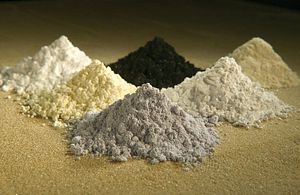Trans-Pacific View author Mercy Kuo regularly engages subject-matter experts, policy practitioners, and strategic thinkers across the globe for their diverse insights into U.S. Asia policy. This conversation with Ryan Castilloux – Managing Director of Adamas Intelligence, a Canadian independent research and advisory firm focused on strategic metals and minerals – is the 198th in “The Trans-Pacific View Insight Series.”
Explain the strategic importance of rare earth elements in U.S. commercial and military technology.
From a commercial standpoint, the rare earth lanthanum is used in the U.S. to produce fuel cracking catalysts that break down crude oil into lighter hydrocarbons like gasoline, diesel, and kerosene. Similarly, neodymium, praseodymium, and dysprosium are used to produce high-strength permanent magnets that are critical enablers of electric vehicle traction motors, wind power generators, energy-efficient appliances, consumer electronics, and an ever-growing list of other modern technologies.
From a defense point of view, rare earths are used in a wide array of applications. Yttrium, for example, is used to produce thermal barrier coatings that protect jet engine parts from melting during operation. Other rare earths are used to produce phosphors for avionic display screens, laser crystals for weapons guidance systems, and permanent magnets used in missile tail-fin actuators or aircraft components.
Therefore, because rare earths are used so widely in commercial and defense technologies, and supply is dominated by a single nation, the strategic importance of rare earths to the U.S. is high.
Amid the U.S.-China trade war, identify key factors that might trigger China’s decision to cut off or restrict U.S. supplies of rare earth materials.
Should China feel that it is not being taken seriously amidst the ongoing trade negotiations or should the U.S. take actions that China considers provocative or disingenuous, China could opt to outright halt exports of rare earths to the U.S., or simply restrict exports to certain companies or industries, including the defense industry.
That said – while such a move may offer China some leverage at the negotiating table today, it risks destroying a lot of demand over the medium- to long-term term as insecure end-users will look for alternative sources of supply or to substitute rare earths in their products for something else.
What other countries or U.S. states offer a viable alternative source of rare earth minerals?
Despite the name, rare earth elements are not particularly rare in nature, but rather are rarely found concentrated into economically-significant amounts to justify costly mining and processing because of certain physical and chemical properties that promote their broad dissipation throughout most rock types.
There are thousands of documented occurrences of rare earth elements around the world, among which are approximately 60 compliant mineral resources and approximately 30 advanced rare earth exploration projects that have examined the economic potential of developing a new mine.
In the U.S., there is an operating rare earth mine in the state of California called Mountain Pass that in 2018 was responsible for about 10 percent of total global mine production. However, the mineral concentrate produced at this mine is currently being shipped to China for processing into the end-use products that other countries, including the U.S., import from China, so at this time is not a viable alternative source of supply.
But the company that operates the Mountain Pass mine (MP Materials) is planning to start processing the mineral concentrate in the U.S. late next year at which time it could meet all of the U.S. catalyst industry’s demand and potentially also all of U.S. permanent magnet demand, should a magnet maker start production in the U.S.
Explain the environmental hazards of mining and processing rare earth elements.
In nature, rare earth elements are often found alongside high concentrations of the radioactive elements thorium and uranium. The rare earth mineral monazite, for example, which is mined in Australia, India, and China, can contain upwards of five weight-percent thorium.
As such, it’s imperative that any thorium and/or uranium in the host rock is recovered during processing of the rare earth feedstock and stored in an appropriate long-term waste disposal site to ensure it does not contaminate the surrounding environment or regional water sources.
Historically, mining practices in China did not place a lot of emphasis on recovery and storage of these radioactive materials, resulting in highly-publicized environmental destruction and water pollution that has broadly given the global rare earth industry a bad reputation. Fortunately, practices are rapidly improving in China, but the legacy of destruction remains.
How should the U.S. foreign policy and security community respond to the potential threat of losing rare earth supplies from China?
The Mountain Pass mine in California is the lowest-hanging fruit available to the U.S. in the near term. However, because the mine is minority owned by a Chinese company (Shenghe Resources), U.S. policymakers and the security community have been cautious to put forward solutions or policies that hinge on its output. It’s become an elephant in the room that no one wishes to acknowledge.
Beyond the elephant, the U.S. still lacks the necessary downstream value-adding capacity to convert rare earth mine outputs into the high-strength permanent magnets its automotive, clean energy, and defense industries rely on, so it’s essential that policies and incentives are put in place to foster the establishment of this capacity.

































